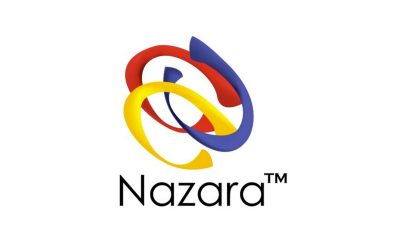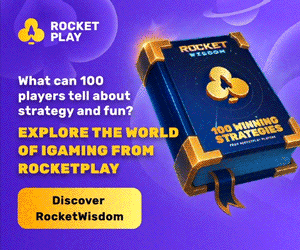Latest News
Sports and Intellectual Property
 Reading Time: 4 minutes
Reading Time: 4 minutes
Intellectual Property (IP) law has a vast domain, and that even stretches to include the world of sports.
While at first this may seem strange, you only need to think for a moment about all of the creative aspects that go into sports. There’s actually a great deal of protectable intellectual property in many different areas.
To go over a few of the ways that intellectual property matters in sports, we’ll touch upon four of the most notable areas: technology, branding, design and licenses/sponsorships.
Technology
Sports technologists are constantly developing better sports equipment with creative and innovative designs and concepts to enhance performance and make the products safer, better and more effective.
From swimsuits to tennis rackets, there is always something that can be improved with cutting-edge ideas that qualify for IP protection, spurring inventors to learn how to patent an idea and ensure the rights to their ingenuity.
As long as the idea that a technologist introduces is truly novel and revolutionary, it is just as eligible for a patent as inventions in other fields.
Previous innovations that were rewarded with patents include:
- Progressive replacement and upgrades of materials (wood/rubber/twine to complex materials with alloys and polymers)
- Sleeker surfboards
- More efficient and comfortable gloves for goalkeepers
- Aquatic wheelchairs
- Sports drinks and supplements
Having patents as such a significant part of athletics is one of the incentives for creative minds to continuously improve equipment and make for a better, more efficient performance by competitive players.
Branding
While patents are one of the more intense and official aspects of intellectual property, other forms of protection like trademarks for elements of brandings are also applicable to the world of sports.
J.D. Houvener, a New York patent attorney, stresses the importance of IP law outside of patents:
“While I’m obviously an advocate for patents and find that to be one of the most exciting parts of entrepreneurship, I also can’t emphasize the importance of other IP law enough. Trademarks, copyrights and trade secrets are all major parts of protecting your brand and creative property, so they deserve some attention as well.”
Brands create value for a particular business and help consumers distinguish between products based on reputation and recognition. Successful branding can lead to customer loyalty and even premium pricing, especially in terms of sponsorship deals and merchandising.
Some famous examples of branding in the sports industry include:
- Recognized names like “Wilson” or “Sketchers”
- Recognized symbols like the Nike swoosh or the Adidas stripes
- Recognized organizations like the NBA in the U.S. or Manchester United in the U.K.
- Recognized sponsors at major events like the FIFA World Cup or the Olympic Games
- Recognized nicknames/poses/slogans of famous athletes like Usain Bolt’s “to di world”
Just like in any other industry, trademarks can help athletes, sports organizations and athletic companies protect what makes their brand unique and recognizable.
Design
Much like with branding, there is also a heavy importance on protecting original design ideas in the world of sports.
Design in athletics can range from a variety of different images and aesthetics that impact the appearance and style of things like shoes, bags, swimsuits and more. The attractive and appealing aspects of sportswear and gear are just as important as other areas of fashion and equipment, particularly when it comes to commercial value.
It all boils down to competition, much like the rest of the global marketplace. A product with a sleek and attractive design will be more marketable than a product of equal function and quality that is less exciting or appealing.
For this reason, companies race to claim and invest in new and creative designs that mirror trends in consumer taste and interest so that they can obtain intellectual property rights over them.
Plus, aside from aesthetic purposes, designs can also play a role in enhancing performance. Lighter, more durable and more comfortable designs and products will win consumers over when they make their decisions, and having a right to those successful designs makes an enormous difference in sales and profit.
Licenses & Sponsorships
Lastly, sports organizations can significantly boost income potential through licensing patents, trademarks and copyrights while still maintaining overall ownership.
Ultimately, this means the original owner of the protection still has claim to that patent, trademark or copyright, but that they sold the rights to another party, giving them permission to produce the idea in exchange for a price.
A trademark license defines the legal relationship between the trademark owner and a producer. The licensee will manufacture and distribute the product with the trademarked concept (such as a name or logo) while the licensor will oversee product quality to uphold the trademark’s reputation.
A technology license is a similar concept that pertains more to equipment-related ideas. Companies who license out their technologies can enjoy a boost in income from wider production and distribution while companies who license in can produce and sell the latest equipment development and maintain competitive drive.
Sponsorship gives a marketing opportunity to companies hoping to capitalize off major sporting events like FIFA World Cup. Sponsors typically gain the rights to brand association, media exposure and other perks depending on their level of sponsorship and the event in question.
In Summary
When most people think of sports, they likely think of the players and the game before anything else. That said, there are still many other areas that are crucial parts of the athletic industry, and intellectual property is a big deal to those areas.
With innovative technology for gear and equipment, branding for teams and companies, original designs for new materials and licenses/sponsorships, the need for IP law is never-ending.
For more great content on sports and gaming, be sure to keep up with our other regular postings!
Article written by: Katherine Lutz. A graduate of Florida State University, Katherine (Tori) Lutz is a Florida native currently living in Brooklyn, New York. Since graduating, she has made a career out of freelance work and published through a variety of outlets in many industries.
Source: Latest News on European Gaming Media Network
This is a Syndicated News piece. Photo credits or photo sources can be found on the source article: Sports and Intellectual Property

eSports
CS:GO Betting Gains Momentum in the iGaming Sector

The emergence of betting on CS:GO has transitioned from a niche market to a considerable portion of the iGaming market. This article looks at the reasons behind the growth, the most popular formats, trends, demographics, geography, and implications for the market. Based on estimates from Esports Insider, the betting market was valued at US$2.5 billion in 2024 and is expected to reach US$2.8 billion by the end of 2025, highlighting the growth of betting in competitive gaming.
The scope of wagering on competitive shooter titles like CS:GO has shifted from informal betting between individuals to sophisticated betting systems involving wagering virtual items, live match bets, and case opening.
The convergence of high-visibility esports, interactive and gambling mechanics, and real-world value gambling items has developed a strong sub-market in the iGaming market, examined in this article.
The Rise of CS:GO Gambling Across Platforms
As central hubs for wagering activities on CS:GO skins and other virtual items, leading CS2 gambling sites have become increasingly popular. Users deposit in-game assets, open cases, and bet on matches or games involving items. The business model is based on converting digital items into gambling entries and completing rapid, high-volume transactions.
For February 2025, a UK Gov.uk review reported 6.9 million unique visits to skins gambling sites worldwide, with 44.9 per cent of the audience in the 18 to 24 age bracket. Members of the 11 to 14 age group were more than twice as likely to participate in skins gambling as those aged 22 to 24.
For analysts, this is proof of the rapidly expanding gambling ecosystem centered on CS: GO and the increasing interest it is attracting from mainstream iGaming operators and affiliates.
The gambling and betting industry has also noted this expansion. Esports Insider place the 2024 esports-betting market at 2.5 billion USD, with projections for the end of 2025 sitting at 2.8 billion USD, confirming that the industry is moving from niche wagering into more mainstream betting.
How Player Engagement is Driving Industry Growth
Players are no longer limited to betting on the outcome of a game; they now participate in the more immersive experiences of skins and case openings and even event mini games. As of late, almost fifty per cent of bets placed on esports are in-play as the streams are ongoing.
The excitement in skin gambling is derived from the thrill of trying to acquire scarce game elements, where the high and the low are strikingly similar to casino games. The above-mentioned review from Gov.uk shows a disproportionate capture of the under-18 audience, where engagement is particularly high and entrenched in behaviours that are predicting gambling.
Participatory growth contributes to turnover, increased market share, and the capture of advertisers and affiliates. We are beginning to see affiliates take a more product-focused approach as high engagement and growth of user bases are influencing design.
Emerging Trends in Virtual Item Wagering
Several trends are changing the nature of gambling with virtual items. Analysts share that the first of such trends is the acceptance of skins and other game elements as a quasi-currency wherein the buying, selling, and wagering of such items have real-world gambling implications.
Hybrid formats other than traditional match betting continue to grow in popularity. These formats primarily rely on chance and are more akin to traditional casino games than sports betting and include case openings, coin flips, crash games, and jackpot games.
Per a regulatory review, the skins-gambling platforms are designed with weak age-gating and responsible gambling controls. These platforms are largely accessed by adolescents, and users exhibit behaviours that are consistent with traditional gambling.
Analysts suggest that operators on these platforms are adopting new trends which include mobile-first interface designs, live micro-betting, skin deposit methods, and cross-platform marketing. The use of these features suggests that betting on virtual items has become part of the mainstream wagering practices in the esports ecosystem.
Partnerships and Market Expansion in iGaming
Partnerships for market expansion between operators, esports organisations, streaming platforms, and item marketplaces are key developments in the gambling market.
Industry sources from the likes of SiegeGG and Bookmaker expert report that operators use strategic partnerships with content creators and esports teams to promote visibility for skin betting and wagering software. Operators are going beyond traditional sports betting and incorporating skin commerce, live-streaming, and cross-platform inventory management.
On the affiliate side, those who understand gamer behavior and the content distribution and inventory flow ecosystems will have better opportunities to capture and retain users.
Looking Ahead
With the recent expansion of CS:GO wagering, it has become a substantial sub-segment of the iGaming industry. Industry forecasts show revenue growth and greater engagement, indicating strong momentum.
However, the potential for success hinges on effective risk management, respect for the relevant regulation, and a command of the virtual item economy.
Analysts explain that operators need to find the balance between growth-led product design and the obligations of player protection, while affiliates need to master the skin wagering mechanics, cross-platform engagement patterns, and promotion accountability.
Investors will want to understand the market potential in the context of legal, operational, and demographic factors that will influence wagering activity.
Latest News
PH 3RD QUARTER GGR FLAT AT PHP94.51B AMID ONLINE GAMING REFORMS
Reading Time: 2 minutes
The Philippine gaming industry posted Php94.51 billion in gross gaming revenues (GGR) in the third quarter of 2025, a slight dip from the Php94.61 billion a year earlier as the industry adjusts to online reforms and tighter rules on digital payments.
The Philippine Amusement and Gaming Corporation (PAGCOR) said the Electronic Games (E-Games) segment remained the strongest performer, rising 17.4% to Php41.95 billion from Php35.71 billion year-on-year.
PAGCOR Chairman and CEO Alejandro H. Tengco noted, however, that the E-Games growth was mainly due to strong July 2025 numbers as revenues in August and September declined following the mandatory delinking of e-wallets from legitimate gaming platforms.
“The figures reflect an industry that is adjusting to necessary safeguards,” he said. “The delinking of e-wallets resulted in a short-term decline in activity toward the latter part of the quarter,” he said. “However, these measures are vital to protect players and ensure secure, transparent transactions.”
He also cautioned that while legitimate operators strictly comply with the new rules, illegal online gaming sites continue to expand aggressively, putting players at risk.
“These unauthorized platforms do not follow responsible gaming standards, do not pay taxes, and put players at risk of data theft and fraud,” Mr. Tengco said. “We urge the public to avoid illegal sites and to engage only with PAGCOR-licensed platforms.”
Outside of E-Games, all other gaming segments registered lower earnings during the third quarter.
PAGCOR-operated casinos recorded an 11.6% decline from Php3.64 billion to Php3.22 billion, while licensed casinos fell 10.2% from Php50.72 billion to Php45.56 billion. Bingo revenues likewise slid 16.2% from Php4.52 billion to Php3.79 billion.
In terms of GGR share, PAGCOR-operated gaming venues generated 3.4% of the GGR pie while licensed casinos brought in 48.2%. E-Games contributed 44.4% and bingo operations accounted for 4% of GGR during the quarter in review.
Despite the downward trend in some gaming segments and adjustments in the online digital payment ecosystem, Mr. Tengco expressed confidence that the industry would regain momentum as players adapt to new e-wallet protocols while authorities strengthen enforcement measures against illegal gambling portals.
The post PH 3RD QUARTER GGR FLAT AT PHP94.51B AMID ONLINE GAMING REFORMS appeared first on European Gaming Industry News.
Latest News
Kambi Group plc’s CEO Werner Becher acquires shares in Kambi
Reading Time: < 1 minute
Kambi today announces that CEO Werner Becher acquired 28,360 shares in Kambi on 7 November 2025.
Werner Becher has on 7 November 2025, through his associated company WBCH Invest Ltd, acquired 28,360 shares in Kambi. The average price for the transaction was SEK 114.24 and the total value was SEK 3,239,846.
Following the transaction, Werner Becher holds a total of 98,360 shares, equal to 0.33% of the total share capital, and 279,724 options in the company.
The transaction was reported to the Malta Financial Services Authority on 10 November.
The post Kambi Group plc’s CEO Werner Becher acquires shares in Kambi appeared first on European Gaming Industry News.
-
Latest News3 months ago
ReferOn Shortlisted for Acquisition & Retention Partner of the Year at SBC Lisbon 2025
-
Latest News2 months ago
Duels for Friends in Trophy Hunter. Invite your friends and create a shared space for fun and competition.
-
Latest News3 months ago
BC.GAME Launches “Nezha” Slot with Up to 46,656 Ways to Win and 10,000x Max Payout
-
Latest News2 months ago
Announcement: 25th September 2025
-
Latest News3 months ago
NODWIN Gaming Acquires Sony Interactive Entertainment’s Stake in Evo; Becomes Majority Holder
-
Latest News3 months ago
Cyprus National Betting Authority Warns Public About Illegal Online Gambling and Misinformation
-
Latest News2 months ago
Flamez – A Fiery New Online Casino Contender from Ganadu
-
Latest News2 months ago
The Countdown is On: Less Than 3 Months to Go Until The Games of The Future 2025 Kicks Off in Abu Dhabi

















You must be logged in to post a comment Login